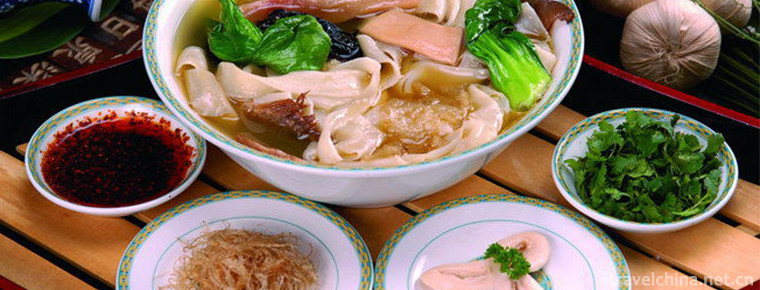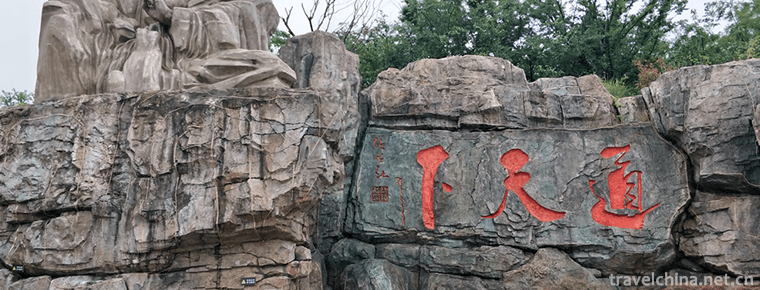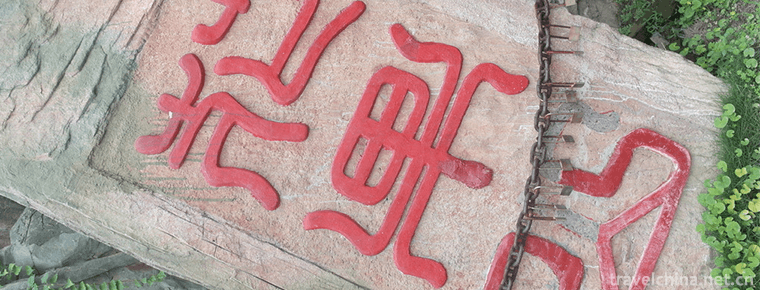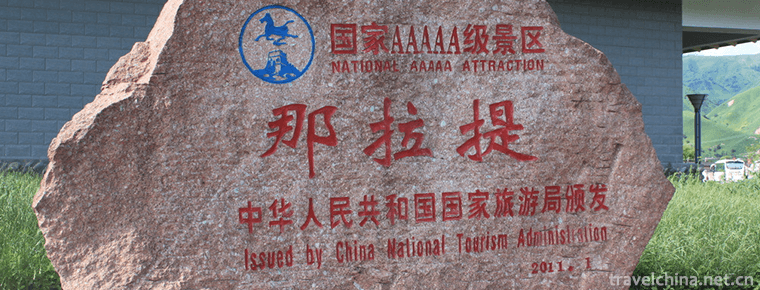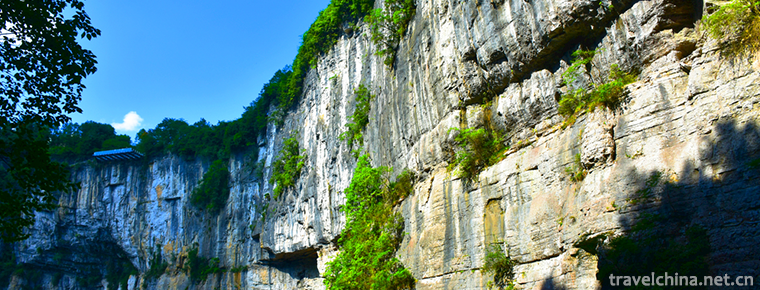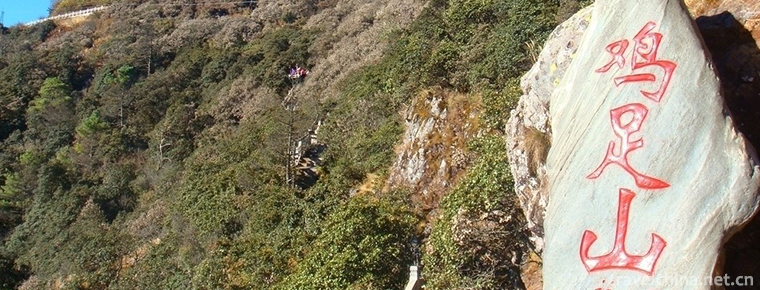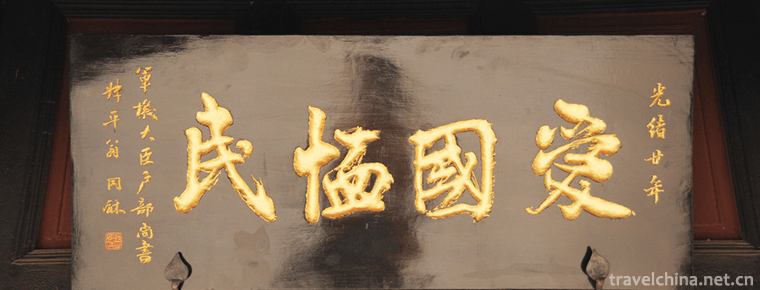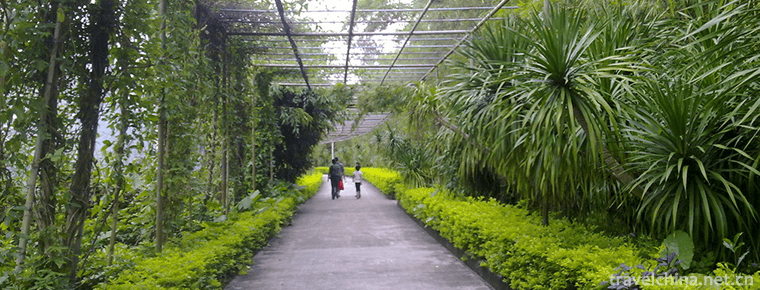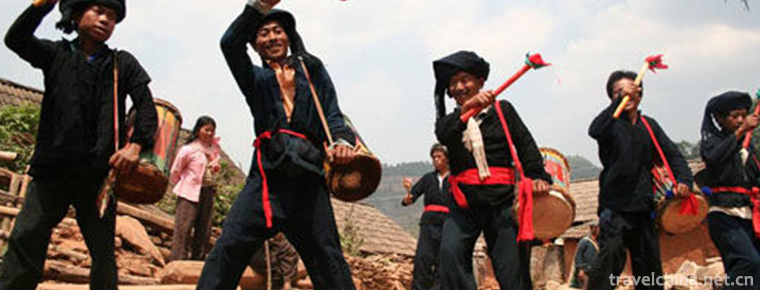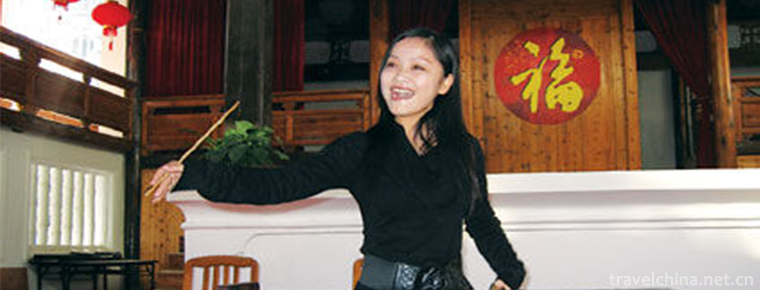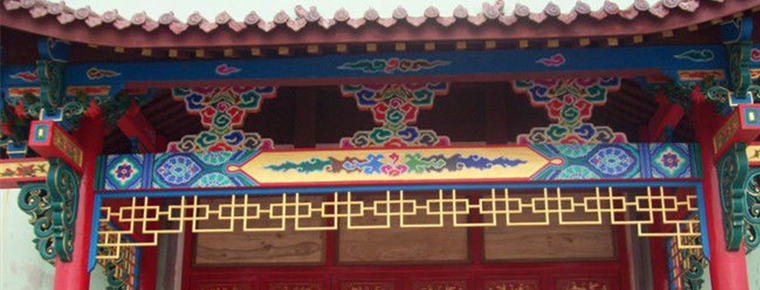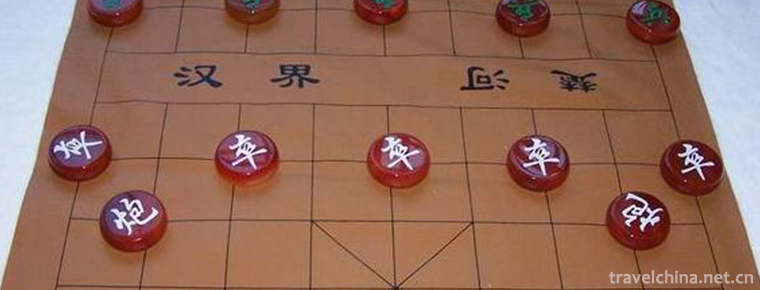Manchu calligraphy
Manchu calligraphy
Manchu calligraphy is a kind of calligraphy created by imitating Chinese seals in the Qing and Qianlong periods. In 1748 (the thirteenth year of Qianlong), Emperor Qianlong of Qing Dynasty ordered Fu Heng and others to imitate the Chinese seal characters and re-create the Manchu seal characters, totaling 32 characters, and determined the names of the Manchu-Chinese combination of all the seal characters. Manchu has four fonts: regular script, running script, cursive script and seal script. Manchu is a alphabetic text, each word has its own length, unlike Chinese characters, which has a regular framework, the content and size of writing is relatively easy to grasp. The different length of Manchu calligraphy compels the author to design the whole text, arrange the space between lines and words, and it is difficult to grasp the layout of the writing. The basic strokes in Manchu, such as lines, prefixes, teeth, dots and circles, are also quite different from the horizontal, vertical, abridged, abridged, dotted and raised strokes of Chinese characters.
In 2014, it was selected as the fourth batch of representative projects of national intangible cultural heritage.
Historical origin
Manchu has four fonts: regular script, running script, cursive script and seal script. Regular script has a wide range of uses, such as the printing of various books, the transcription of hard-written books, and the rewriting of imperial edicts, decrees, memorials, inscriptions and other official documents. The use of running books is more extensive, such as the copy of ordinary books, the drafting of various manuscripts, the renovation of correspondence documents between central and local state organs and officials at all levels, and the collection, copy and archiving of various official documents. The use of cursive script is relatively narrow, mainly used for drafting some manuscripts, personal letters and notes, as well as the creation of calligraphy works. Seal characters in Manchu language appeared as early as the beginning of Manchu language creation, but there are few types, monotonous fonts and not widely used. As in Tongzhi of Qing Dynasty, "Qing seal script was handed down from Emperor Taizong Wen when the original seal script and the national seal script came out one after another, especially in the absence of each body, the tradition is still rare."
In 1748 (thirteenth year of Qianlong Emperor Qianlong), Emperor Qianlong of the Qing Dynasty (thirteenth year of Qianlong Emperor Qianlong) ordered Fu Heng and others to reproduce Manchu seal scripts in Chinese seal scripts, a total of 32 characters, and determined the Manchu-Chinese seal names of each seal script, namely Yujin seal, Zhiying seal script, Zhiying seal, upper big seal, small seal, small seal, Zhongding seal, Zhongding seal, pendpendulullululululululululululuzh, williye seal, seal, sisisisisisisisi, seal, seal, hanging needle seal, Longseal, Longzhzh seal, Longzhzh seal, susususususususuSeals, Lufeng Seals, Kedou Books, Turtles Books, inverted seal, birdbook, grave book, big seal, Lin Shu, Zhuanshu seal, carved insect seal, carved symbol seal, golden mistake seal, Bangtou seal, flying white book, dragon claw seal, odd character, ziluo seal, scissors seal, Biluo seal. Since then, the types of seal characters in Manchu have increased, the fonts are standardized and the names are unified. In order to promote the newly created seal characters in Manchu, the Royal Shengjing Fu was printed in 32 kinds of fonts at that time. However, the use of Manchu seal characters was relatively narrow, and in the Qing Dynasty they were mainly used to engrave precious seals and official seals.
Calligraphy characteristics
Manchu is a alphabetic text, each word has its own length, unlike Chinese characters, which has a regular framework, the content and size of writing is relatively easy to grasp. The different length of Manchu calligraphy compels the author to design the whole text, arrange the space between lines and words, and it is difficult to grasp the layout of the writing. The basic strokes in Manchu, such as lines, prefixes, teeth, dots and circles, are also quite different from the horizontal, vertical, abridged, abridged, dotted and raised strokes of Chinese characters.
Representative works
Manchu, as a "national script" in the Qing Dynasty, was combined with Chinese in the inscriptions. It has also compiled historical, literary and linguistic works. It has translated a large number of Chinese books, such as Mencius, General Guidelines for Zizhi, Romance of Three Kingdoms and Strange Tales from Liaozhai. After the Revolution of 1911, Manchu was basically no longer used. The millions of Manchu documents preserved today are precious materials for studying the social nature of the early Qing Dynasty, the history of the Qing Dynasty, China's foreign relations and the evolution of Manchu Manchu.
Manchu documents in the Qing Dynasty are all-inclusive, covering a wide range of areas, and most of the contents reflected are not found in Han documents and other documents, which have important value for use and research. Manchu documents are the first-hand materials for studying the general history of the Qing Dynasty and various special histories, as well as an inexhaustible treasure house for studying Manchu Manchu. In addition, the documents on hydrology, meteorology, geography, property and other aspects in the Manchu documents have certain reference value for China's modernization construction.
Calligraphy use
The Qing Dynasty wrote a large number of official documents in Manchu, and also translated a large number of Chinese classics in Manchu. In addition, many inscriptions and compilations of tablets and books preserved in the Qing Dynasty are also written in Manchu. As a testimony of the history of the Qing Dynasty, a large number of Manchu historical materials left over from the Qing Dynasty are a very precious historical heritage and a valuable national wealth.
The treaties concluded by the Qing government with foreign countries and important announcements and documents issued at home must have Manchu texts. Manchu feudal officials and courtiers should report to the emperor on military affairs and official and civil conditions. For the sake of confidentiality, Manchu texts should be used to improve the performance.
At present, most of the Manchu documents retained are written in improved languages, such as "Foreign Records", "Nishan Shaman" and a series of dictionaries named after the Qing Dynasty Literature Academy. In addition, there is a Manchu seal script, which was created in the thirteenth year of Qianlong (1748) in the Qing Dynasty with reference to the Chinese seal script. There are 32 types of fonts, named according to the characteristics of strokes, such as Miaoluo seal, Longshu and so on. This seal was used to print Emperor Qianlong's Royal Shengjing Fu, but it was mainly used for jade seals and imperial seals.
artistic characteristics
Manchu, rising between the harsh climate and the backward development of Baishan and Heishui, in that era when the prosperity of the people was the strength target , it could enter the Central Plains with amazing ability only by its very small population. In addition to many macro-political, historical and cultural factors, the national personality expressed in Manchu characters is also one of the reasons worthy of people's reflection.
The Manchu cheongsam, simple and smart paper-cut, which is still popular today, is the proof that Manchus are good at creating and appreciating beauty. The Manchu script is the same. It leaves us a feeling of stubbornness and simplicity in the mountains. It is precisely this long-lost breath that represents the hope of life, vitality and development. From the cultural relics of the Qing Dynasty preserved up to now, we can see that in the imperial edicts, decrees, Zhu criticisms, memorials and seals written in Manchu, inscribed with carved knives in the tablets of the Forbidden City and the major imperial mausoleums, Manchu calligraphy shows all the artistic characteristics of being elegant, solemn, spiritual and elegant. A minister's Memorial shows us the author's long-standing calligraphy skills. An imperial decree or Zhu criticism reveals the foundations of the emperor's calligraphy from childhood. Emperor Yongzheng was good at Han calligraphy, preferring running and cursive calligraphy, and his Manchu calligraphy was also skilled and exquisite. From the handwriting handwriting handwriting handwriting of Yongzhengman, his calligraphy skills are profound, his style is free and unrestrained, and he does not intentionally pursue the so-called rules. His brushwork is strong and strong. His ink rhyme is graceful and fluent. In the combination of rigidity and softness, a kind of Confucianism and elegance floats out. Emperor Qianlong was immersed in calligraphy all his life. He also creatively created a long, ten thousand-character novel Shengjing Fu written in 32-body Manzhuan calligraphy, which became a rare treasure.
Appreciating the handed down Manchu calligraphy from the artistic point of view, the whole is vigorous and publicized, the middle axis is as long as the river flowing straight down, free and free and affirmative; filling the turning point with inner air, or relaxing or relaxing; the jumping of circles and the coherence of writing style are more natural and full of true spirit. Zhang Huaiqu of Tang Dynasty once put forward such a standard for calligraphy art: "Ten thousand miles of affection, standard aspiration". But Manchu calligraphy, whose backbone is like iron, whose circles fly like iron riding overhead, is not exactly the image of "standard aspiration"? Mr. Lu Xun once said: "Calligraphy is not poetry but poetry charm, not dance but dance rhythm, not song but song melody." If the above characteristics of Chinese calligraphy need to be understood by inner feelings, then Manchu calligraphy from font to brushwork more intuitively reflects this aesthetic standard of calligraphy.
Inheritance significance
In the history of China, there was an era of multi-ethnic calligraphy and beauty, and they jointly compose colorful movements in the history of Chinese calligraphy. From the existing cultural relics, we can see that each minority script has its own unique form of calligraphy. Moreover, the interaction and blending characteristics of multi-ethnic cultures are very obvious. From the calligraphy works of many ethnic minorities, we can see that in the process of the development of ethnic minority calligraphy, its whole structure, composition layout, leading tie, first and last echoes, luck flow, fluctuations and momentum, pen twist, implication and other techniques have thousands of silks with the traditional Chinese calligraphy. There are also many similarities with Chinese character calligraphy in writing tools, paper use, signature, aesthetic concepts and so on. Moreover, the Manchu and Mongolian brush manuscripts in the Qing Dynasty have always been regarded as calligraphy works of great historical value; Manchu and Mongolian scripts also bring a lot of inspiration to Han calligraphers or calligraphers who use Chinese characters to create. Among them, Basiba, as the official language of Yuan Dynasty, was used for reference by many Han seal carvers in their creation. It can be said that minority calligraphy, including Manchu calligraphy, is a valuable element to expand and enrich the artistic expression and cultural vision of Chinese calligraphy. Unfortunately, today, when Chinese calligraphy and seal carving have become the world's intangible cultural heritage, it is a pity that minority calligraphy can hardly be seen in the long river of calligraphy art.
In the process of creation and development of Manchu script, the absorption and integration of excellent culture of other nationalities is more obvious, which is directly related to its broad mind and ability to absorb and integrate multi-ethnic excellent cultural heritage. Manchu is a kind of writing created with the help of some elements of Mongolian characters and Chinese characters. Although Manchu characters are Pinyin characters, Manchu calligraphy, like Chinese calligraphy, is the art of lines. Moreover, the decorative meaning of Manchu is very strong, and it has a unique aesthetic feeling. Its brush calligraphy is deeply influenced by Chinese character cursive writing, and its hard-pen calligraphy has a power beauty of cutting axes and knives in expressive force. Throughout the history of Chinese calligraphy, the emergence of each new font and the development of each ancient character can bring new vitality to the creation of calligraphy. From scraps of Scripture writing in Dunhuang Grottoes to 20 articles in Longmen Grottoes, a large number of works left by minority calligraphers and Han calligraphers deeply influenced by minority cultures have promoted the development of Chinese character calligraphy to varying degrees. At the same time, in terms of skills and means, they are deeply influenced by the traditional Chinese calligraphy. In this process of integration, ethnic minority characters have actually become a new element in the development of Chinese calligraphy art, greatly enriching the expressive force of Chinese calligraphy art. Therefore, we have reason to believe that Manchu calligraphy, as one of the most influential minority languages in China, will not be lost, especially the passionate efforts of a group of researchers and volunteers who are willing to rescue and inherit the national characters, and the art of Manchu calligraphy will be loved by more and more people.
The words of a country or a nation are the embodiment of national culture. For Manchu, since the ambitious Nurhachi Erdeni and Gagai created Manchu in 1599, Manchu has experienced a long process from regional use to becoming one of the official languages in the country, and has had a glorious time in the cultural and artistic history of nearly 300 years. It used to be the most important spiritual link of the Manchu community and an important bridge between China and foreign countries and the blending of Manchu and Han. It has greatly accelerated the pace of Manchu social development, recorded and preserved a large number of cultural heritage, and enriched the cultural treasure house of the Chinese nation.
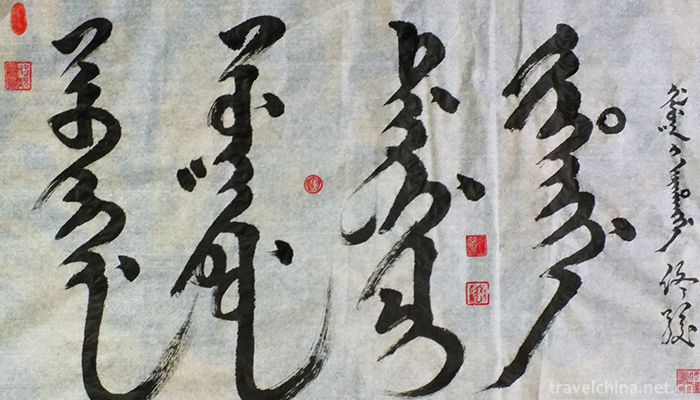
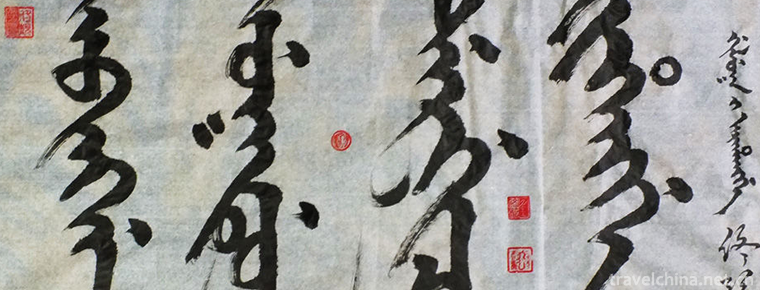
Manchu calligraphy
-
Zhengzhou Xiao Ji stewed noodles
Zhengzhou Xiao Ji stewed noodles,Xiao Honghe, the founder of Xiao Ji Yanmian, was a master of Yifumian at Changchun State-owned Hotel in Zhengzhou.
Views: 199 Time 2018-11-26 -
Mount Maoshan
Maoshan is located in Jurong City, Zhenjiang City, Jiangsu Province. It is about 10 kilometers long from north to south, 5 kilometers wide from east to west, and covers an area of more than 50 square
Views: 223 Time 2018-12-06 -
MountHuaguoshan
Mount Huaguoshan (Lianyungang Huaguoshan Scenic Area) is located at the middle foot of Nanyuntai Mountain in Lianyungang City.
Views: 303 Time 2018-12-06 -
Narati Scenic Spot
Narati Tourist Scenic Area, located in Xinyuan County, Xinjiang, is located in the hinterland of Tianshan Mountains, the eastern end of the Ili Valley
Views: 161 Time 2018-12-12 -
Wulong Karst Tourist Area Movie Transformers Place
Wulong Karst Tourist Area is located in Wulong District of Chongqing City. It has rare natural karst landscape, including karst caves, Tiankeng, ground crevices, canyons, peaks, alpine grasslands, etc
Views: 246 Time 2018-12-12 -
Jizu Mountain Scenic Spot in Binchuan
Jizu Mountain is located in a cave-making area about 20 kilometers west of Binchuan County, Yunnan Province, 90 kilometers away from Dali City. It is named for its three peaks in the front and a ridge
Views: 165 Time 2019-01-03 -
Mars Manor Scenic Spot
Ma's Manor, located in Xijiang Village, 20 kilometers west of Anyang City, Henan Province, is the mansion of Ma Piyao, governor of Guangdong Province in the Qing Dynasty.
Views: 163 Time 2019-02-06 -
maoming forest park
Maoming Forest Park is located in the western suburb of Maoming City, Guangdong Province. It is only 12 kilometers away from the urban area and covers an area of more than 4500 mu
Views: 221 Time 2019-02-07 -
Butterfly Bucket Encouragement of the Browns
Buzz drum dance is a kind of collective dance of men and women of ancestral origin. It has great improvisation. There are two kinds of dance methods: He Xinfang and
Views: 327 Time 2019-04-04 -
Fuzhou Reviews
Fuzhou dialect commentary is a unique traditional form of storytelling in Fuzhou dialect of Fujian Province, which is popular in Fuzhou, Fujian Hou, Yongtai, Changle, Lianjiang
Views: 147 Time 2019-04-30 -
Architectural coloured drawing
Building painting is a kind of image art, which occupies an important position and unique function in building decoration. It has vivid image, abundant content, observability and practicability
Views: 287 Time 2019-05-05 -
Chess Xiangqi
Chess, also known as "Chess", Chinese chess (English name Chinese chess), Chinese traditional chess puzzle game, has a long history in China, belongs to a two-person confrontational game, be
Views: 183 Time 2019-07-06
